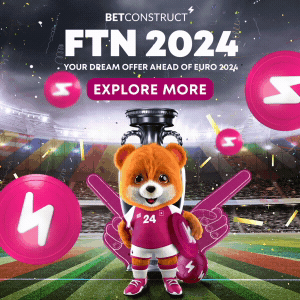Zona de Azar India – Enhancing the Player Experience: The Evolution of Gamification in Sports Betting
 India.- 22th December 2023 www.zonadeazar.com When it comes to buzzwords, most fall flat, merely serving as placeholders for complex ideas that can’t be easily summarized. Then there’s “gamification,” a term with significant weight, possessing enough momentum to reshape entire industries. In the realm of sports betting, gamification is not just a buzzword; it’s intrinsic to the industry’s operations.
India.- 22th December 2023 www.zonadeazar.com When it comes to buzzwords, most fall flat, merely serving as placeholders for complex ideas that can’t be easily summarized. Then there’s “gamification,” a term with significant weight, possessing enough momentum to reshape entire industries. In the realm of sports betting, gamification is not just a buzzword; it’s intrinsic to the industry’s operations.
Historically, gamification has encompassed sub-content designed to acquire and engage players. As the industry evolves, so do approaches to gamification, with companies aiming to enhance game elements in betting spaces to provide players with better options and assist operators in building and retaining audiences.
Brad Vettese, CEO of Tally Technologies, and John Smith, VP of Sales, Gamification, and Loyalty at Xtremepush, both emphasize the critical role gamification plays for all betting operators.

Current Landscape
Gamification elements vary widely, and the overall concept is challenging to define precisely. John Smith notes that players now seek to feel valued and appreciated, emphasizing the importance of customizing experiences to avoid taking customers for granted.
According to Brad Vettese, gamification can be distilled into two key elements: “gameful thinking” and incentivization. It enhances customer loyalty by creating a sense of progression, making the betting experience more enjoyable and immersive.
Vettese dismisses previous definitions, stating that gamification has evolved into harnessing the power of next-generation systems for improved conversion rates and data-led insights. The focus has shifted from simulating the betting experience to offering customizable game types that engage sports fans, particularly the elusive casual player segment.
Current Challenges and Opportunities
In a landscape where sports betting accessibility has reached unprecedented levels, gamification has the potential to educate and nurture new audiences for sportsbooks. Smith emphasizes that a gamification strategy is now a business-critical element, incorporating player acquisition, daily retention, cross-selling between verticals, and loyalty programs.
The Future of Gamification
The future of gamification is dynamic, with Vettese and Smith offering distinct visions. Smith highlights the importance of personalized experiences, emphasizing the need for operators to work closely with players, providing enjoyable content and personalized rewards. This approach can turn players into brand advocates, attracting new sign-ups based on positive experiences.
Vettese envisions Gamification 2.0 as an opportunity to engage casual sports fans effectively. The next generation of gamification products aims to generate first-party data and insights, enabling sportsbooks to build actionable, segmented audiences with double-digit conversion rates. Tally’s Game Center product, for instance, aggregates multiple game types into one solution, connecting with diverse audiences.
Both experts stress the importance of personalization, utilizing data and insights to create tailored offers that resonate with individual players. This personalization is seen as a key element in retaining and engaging bettors, particularly in an era where acquisition is less of a priority due to market saturation.
Innovative Approaches
As gamification continues to expand, innovative ideas emerge. Vettese applauds the inclusion of consumer brand sponsors in games, bringing authenticity and consumer rewards. Smith advocates for gamification elements that create “surprise and delight” moments, emphasizing personalization to avoid becoming generic.
Smith sees potential in utilizing free-to-play (F2P) as a standalone site, creating a nurturing environment for players. Vettese, on the other hand, sees education as a crucial aspect, offering free games to build relationships with casual players and converting them into active customers.
Looking Ahead
Drawing inspiration from other industries, Vettese mentions basketball teams like the LA Lakers launching game centers, while NFL franchises leverage prediction and trivia games to engage fans. Smith emphasizes three key learnings from other industries: personalization, player-centric design, and the use of gamification for both loyalty and education.
As gamification evolves, operators need to understand its role in player retention, reactivation, and reward systems. The underlying objective remains keeping customers happy and delivering what they want. Both Smith and Vettese anticipate a bright future for companies embracing gamification, viewing it as a case of evolution over revolution. The focus is on understanding how gamification enhances the overall player experience, ensuring customer satisfaction remains at the heart of the industry’s evolution.
Edited by: @MaiaDigital www.zonadeazar.com










































